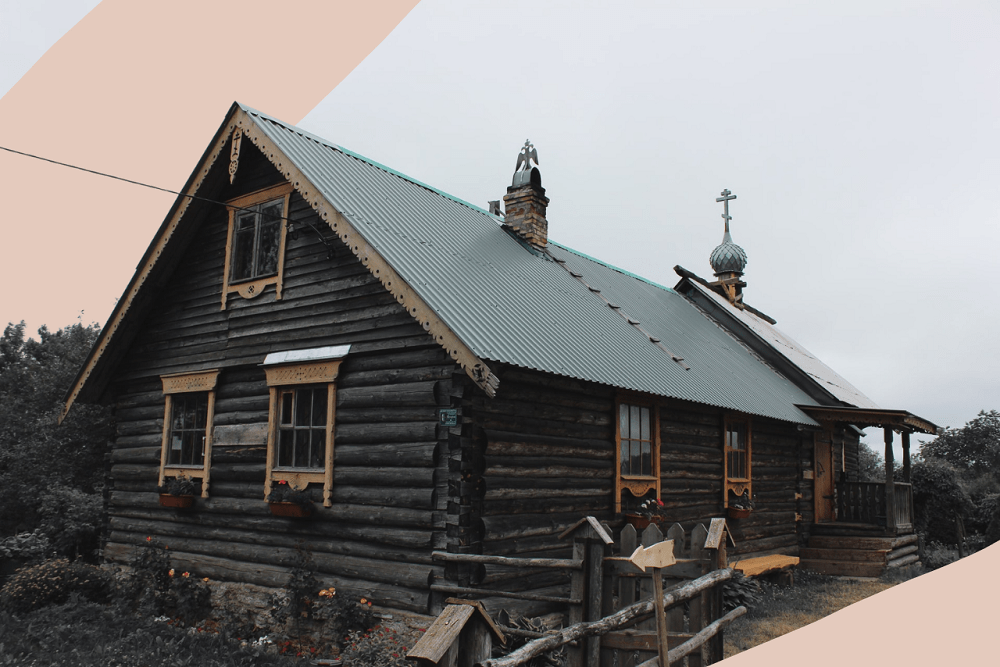As John F. Kennedy once said, ”the time to fix the roof is when the sun is shining”. But as the clocks go back, the temperatures drop and the nights draw in, you could argue that now really is the time to get your home winter-ready if you haven’t already done so.
In 2025, this has never been more pertinent, with energy bills still rising, a climate catastrophe actualising, and the need to conserve heat at home an ever more pressing concern. Whilst much of this is down to events outside of our control, there are some proactive steps you can take to wrestle back a little control by winterproofing your home.
If you’re looking to prevent any unwanted cold weather surprises this year (and keep yourself busy, too), then read on; here are 12 maintenance tasks you should tackle this winter.
Seal In The Heat
The seals around your doors and windows are a major source of heat loss. If you’re keen to lock heat in, then it’s imperative that you check the seals around your doors and windows. Simply run your finger around the seals or use a screwdriver to check for hidden gaps. Filling them with caulk is a simple DIY job – here’s how to do it.
Gutters, Drains & The Roof
Clearing out your gutter and drains of debris and buildup isn’t a fun job, but it’s a necessary one. Well maintained gutters reduce the need to replace them in the long run, moreover, having gutters free of debris minimises the chance of roof damage and water build up. You’ll want to invest in a suitable, safe ladder for this.
Speaking of roofs, roof damage is one of the most common issues to affect homes in Winter. As such, it’s important you check yours. As the Bromley roofing services providers at PSE tell us, a simple inspection is all that’s required here, making sure that there are no loose or cracked tiles, or slates on your roof, as breakages or gaps could let water in.
We’ve written a DIY guide on how to check your roof for damage here; do check it out. And if in doubt, a second opinion by a professional never hurts.

Protect Your Pipes
A frozen pipe is simply not something you want to mess with; it can burst, flood your home and cause a myriad of problems in the process. Before we enter the deepest recesses of Winter, it’s sensible to check yours are clear of obstruction and damage.
Prevention is clearly preferable to cure here, and the best way to pre-empt and protect from frozen or burst pipes is to keep your house at a consistent temperature, preferably via your thermostat.
Even if you’re away on a winter holiday, it’s a good idea to have your heating on a timer, at least coming on for a couple of hours each day, to keep your pipes in good nick. Insulating your pipes is also a smart move.

Protect Ya Deck
The winter garden can be a bleak and barren place, where only the hardiest of plants survive and only the most inquisitive of wildlife enter. That said, this isn’t just a case of hunkering down and ignoring your garden until the yellow daffodils bloom; there are more permanent elements of your outdoor space that require attention during winter, most chiefly your decking.
Get a head start. During autumn, make sure you’re regularly sweeping away those seasonally-fallen leaves, which can make your decking slippery at best and rotten at worst.
As a bare minimum, you should cover your decking in a water-resistant tarp to protect against the worst of winter’s excesses. Though your decking will most likely be industry-standard treated 8×2 timber, you’ll also want to apply an anti-slip coating to it to protect not only against slipping (obvs!) but also from defrosting ice and water penetrating your boards.
Read: 5 ways to make the most of your deck this winter
Tend to Your Log Cabin
If you’ve got a log cabin in your garden, winter preparation is essential to prevent damage from the harsh British weather. Check for gaps between logs that may have developed during the warmer months—wood naturally expands and contracts with temperature changes. Use appropriate wood filler or chinking material to seal any spaces, paying special attention to areas around windows and doors.
Give the exterior a thorough inspection for signs of rot or pest infestation, and ensure the protective coating or stain is still effective. If water no longer beads on the surface, it’s time for a fresh application.

Call In The Chimney Sweep
Ok, we know that we said these were tasks to tackle yourself. However, some winter maintenance tasks really do require a professional’s hand, and, if you have an active fireplace, then chimney sweeping is definitely one of them. Not cleaning a chimney can lead up to a build up of soot, which in turn can cause a chimney fire.
Give Your A Boiler A Dry Run
Speaking of checks to get done before Winter fully sets in, it’s also a smart move to give your boiler a dry run to check everything is working prior to December and the beginning of the colder months. If you leave it until the temperatures reach those dreaded minuses, only to discover things are amiss, then you’ll be at the back of the queue when it comes to getting it fixed. Indeed, every plumber and heating engineer will attest that demand for their services shoots up as the colder months arrive.
As such, test things yourself and even if everything is working, get it serviced to ensure that this is going to remain the case. The boiler experts at *checks notes* IDEAL Magazine have written a really useful guide about when to know when your boiler needs servicing. Do check it out.
Inspect & Update Insulation
Speaking of insulation, and as the cold weather sets in, one of the most effective ways to keep your home warm and reduce energy bills is to ensure that your insulation is up to par. Over time, insulation can settle or become less effective, so it’s important to inspect it regularly. Check your attic, walls, and basement to see if the insulation is still adequate. Look for any areas where it may have been compromised or where there might be gaps.
If you find areas where the insulation is lacking, consider adding more. There are various types of insulation available, such as fiberglass, cellulose, or foam, and each has its own advantages. Remember, proper insulation can make a significant difference in your home’s ability to retain heat and can lead to substantial savings on heating costs.
Carport Care
Don’t overlook your carport just because it’s a simple structure – it needs winter preparation too. Start with the roof, clearing away any accumulated leaves and debris that could trap moisture and cause damage. For polycarbonate roofs, check for cracks or loose panels that might worsen under snow or during strong winds.
The supporting posts deserve special attention, particularly where they meet the ground. Look for signs of rust on metal supports or rot in wooden posts, and apply protective coatings as needed. If you have guttering, give it the same attention as your house gutters to ensure proper drainage throughout winter.
Bleed Radiators & Insulate
Other ways you can ensure your heating system is in good working order is to bleed your radiators, lag your pipes and insulate your hot water tank – this could save you quite a bit on your energy bills, too. In particular, radiators need to be bled each Winter to ensure they are running at full capacity and efficiency. Fear not; it’s an easy task to complete.

Prepare An Emergency Kit
Winter storms can come unexpectedly and may lead to power outages or being snowed in. It’s essential to prepare for such scenarios by assembling an emergency kit. Your kit should include items such as flashlights, batteries, a first-aid kit, non-perishable food items, bottled water, blankets, and warm clothing. Additionally, make sure to have a supply of any necessary medications and a portable charger for your mobile devices.
It’s also wise to include a battery-powered or hand-crank radio to stay informed about weather updates and emergency information. Preparing an emergency kit ensures that you and your family remain safe and comfortable during unforeseen winter emergencies.
Learn The Signs
It’s important to be aware of the warning signs of problems in your home so that you can address these issues quickly. A few things to look out for include signs of damp in your property such as a musty smell, mould, peeling paint or wallpaper, or sometimes the wall might be wet to the touch.
Flickering lights and sparking outlets are indicators of electrical faults or appliances short-circuiting when plugged into certain sockets, and an unwelcome draught is a sign of potential damage to doors and windows. Good luck!





